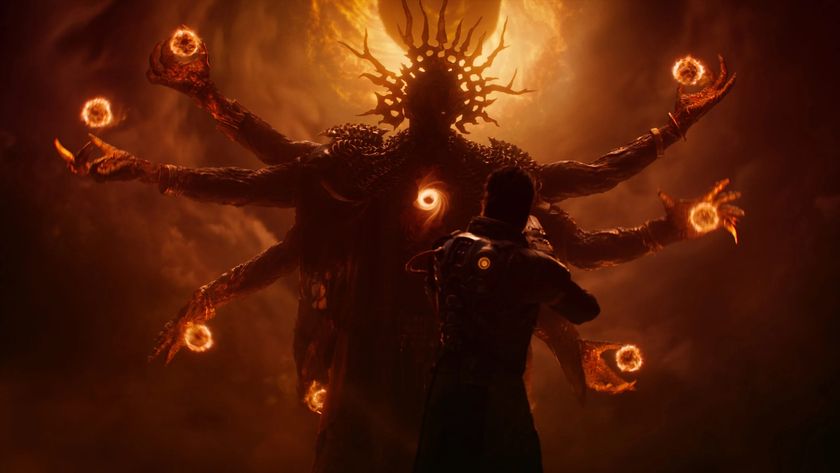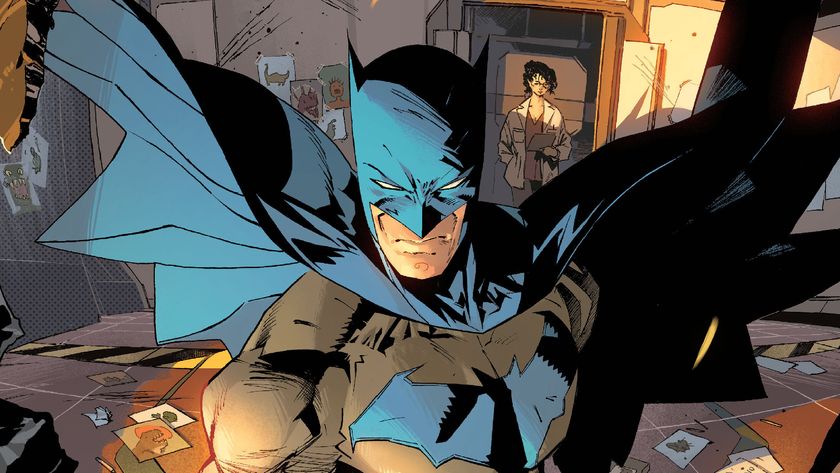Razer unveils unique gaming laptop
Can desktop power merge with laptop portability? We’ll see soon
Razer came by our offices the other day to show us their first foray into the laptop market, which could have been accomplished in a simple press release, but they’re obviously proud of what they’re dubbing the Razer Blade, and from the look of it, they probably have a reason to be. The funny thing is, even though it was right in front of us, we didn’t get a chance to actually play with it, so we don’t know yet how its unique features feel – but they certainly look cool.
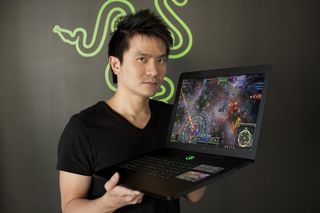
Above: CEO and Creative Director Min-Liang Tan was quite happy to show this thing off
The main claim for the Blade is that it’s not just the best gaming laptop, but “the world’s first true gaming laptop.” Bold claim, we know. They explained to us what it means: the power of a monster laptop like the ones Alienware produces, but without the excessive bulk, which makes typical gaming laptops not conveniently portable. The Blade has a 17-inch screen, making it basically the same size as a MacBook Pro as far as width and length, but it’s even thinner than the Mac at 0.88 inches. They’ve also managed to shrink the power supply to about half that you’d find in an Alienware, adding to the overall portability.
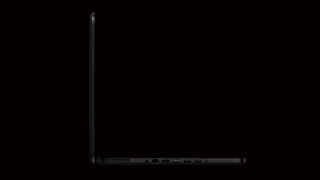
Above: We told you it was thin
The feature that makes the Blade unique, though, is the Switchblade interface. On the right side of the keyboard is a massive touchpad/screen with mutlitouch capability and gestures for control, and the pad also serves as a second screen. Some of the uses mentioned were being able to train the screen at a different point of the map during a match of League of Legends so you can watch two places at once, or running YouTube on it so you have a video walkthrough handy while playing a game on the big screen. We don’t know how well the touchpad will work for actually controlling a game, say in an FPS, but the huge size of it could make it a viable option, at least in single-player where the pressure of competition isn’t present. Above the pad are ten keys with their own displays, meaning you can program commands into them and also have backlit icons from the actual game within each key. Certain games will have official support for icons and commands, but users can also generate their own templates and share them with others.
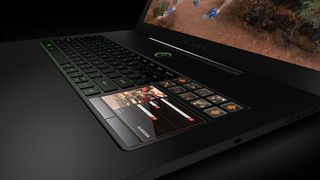
Above: The Switchblade interface
The whole package is damn sexy to look at, but unless we get a chance to actually play some games on it, we don’t know yet how it all handles. It may not be totally competitive with a top-of-the-line desktop, but it’s close. Here are the specs:
Sign up to the 12DOVE Newsletter
Weekly digests, tales from the communities you love, and more
· 2.8GHz Intel® Core™ i7 2640M Processor
· 8GB 1333MHz DDR3 Memory
· 17.3" LED Backlit Display (1920x1080)
· NVIDIA GeForce® GT 555M with NVIDIA® Optimus™ Technology
· 2GB Dedicated GDDR5 Video Memory
· Built-in HD Webcam
· Integrated 60Wh Battery
· 320GB 7200rpm SATA HDD
· Wireless Network 802.11 b/g/n Compatible
· 16.81" (Width) x 10.9" (Depth) x 0.88" (Height); 6.97lbs (Weight)
Of course, none of this will come cheap. Hold onto your wallets – the Blade clocks in at a retail price of $2799.99. While that is nothing to sneeze at, on paper it’s much more powerful and thinner than a MacBook Pro, so it’s in theory competitively priced. We’re also curious to see how the Switchblade interface works, since it’s something we haven’t seen in other laptops. We’ll find out if the Blade can fulfill all of its promises sometime later this year.
Aug 26, 2011
Most Popular






